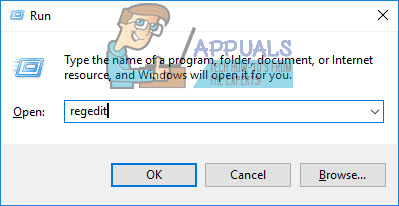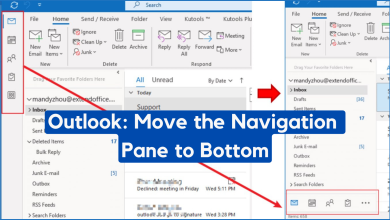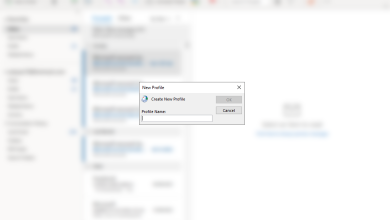Fix: Outlook Blocked Access to the Following Potentially Unsafe Attachments
Some users have been reported that they receive the ‘Outlook blocked access to the following potentially unsafe attachments’ error at the top of the Reading Pane. Most users report that the issue is occurring whenever they try to open an email that contains an attachment.

What causes the ‘Outlook blocked access to the following potentially unsafe attachments’ error?
We investigated this particular issue by looking at various user reports and the repair strategies that they used to to get the issue resolved. From what we gathered, there are several common scenarios that are known to trigger this particular error message:
- The attachment was blocked because it contains an extra ‘.'(dot) at the end of the filename – Outlook will no longer accept attachments that don’t follow the official attachment guidelines. This security update was introduced to patch a vulnerability that could allow remote code execution.
- Outlook is updated with the security update that blocks certain attachments – Security updates KB3191898 (Outlook 2007), KB3203467 (Outlook 2010), KB3191898 (Outlook 2013) and KB3191932 (Outlook 2016) will patch a series of vulnerabilities that will prevent code execution.
- The attachment is of an unsupported extension – There’s a whole list of unsupported extensions that Outlook no longer agrees with. Here’s a list of file types that are currently blocked by Outlook.
Although Outlook blocks certain attachments for security reasons, it also ends up affecting a lot of users that don’t have shady reasons. For example, if you’re a programmer and you receive a .js file through Outlook, you will no longer be able to open it if you have the latest security updates installed.
If you’re struggling to resolve this particular error message, this article will provide you with a collection of verified troubleshooting steps. Down below, you’ll have a collection of methods that other users in a similar situation have used to get to resolve or circumvent the error message.
To streamline the whole process, we encourage you to follow the methods below in the order that they are advertised. You should eventually stumble upon a method that is effective in your particular scenario.
Method 1: Asking the sender to use a file sharing service
If it’s possible, you can try to ask the sender to upload the attachment to a server or FTP site and send you the download/access link. You can use services like Mega.nz, Dropbox, Google Drive or even WeTransfer.
Anything should work, as long as the file is not uploaded directly as an email attachment. The important thing is to change the extension. As long as you use a file sharing service you should not have any troubles getting hold of the files you receive via Outlook.
If this method isn’t helpful or wasn’t applicable, move down to the next one below.
Method 2: Asking the sender to use a file compression utility
Another potential workaround is to convince the sender to use a file compression utility such as WinZip or 7 zip or WinRar. If the sender compresses the file and sends you the compressed archive file through Outlook, the security checks will no longer block the file since it will contain a different extension.
As of now, Outlook does not recognize .zip and .rar extension as potential threats, so you should have no trouble downloading an attachment of this kind.
If this method wasn’t applicable or you’re looking for a method that doesn’t involve using a third-party compression software, move down to the next method below.
Method 3: Asking the sender to change the file name extension
If the first two methods didn’t accommodate your particular scenario, you can also resolve the ‘Outlook blocked access to the following potentially unsafe attachments’ error by asking the sender to rename the attachment software to an extension that is not considered a threat by Outlook.
For example, if you want to receive a .exe file from someone, ask the sender to rename the extension to .doc or .txt. This will make the file bypass Outlook’s security net. To modify the extension of a file, simply right-click on it, choose Rename and change the extension by modifying the termination (after ‘.’ dot).

After the sender modifies the attachment to a supported extension, your job is to extract the attachment and convert it back to its standard extension. To do this, locate the attachment in the email that you received, right-click on the attachment and choose Copy.
Then, navigate to a convenable location (such as the desktop), right-click and choose Paste. Then, click Rename from the same context menu and rename the file to the original file name extension and hit Enter.
Note: If you can’t see the extension types of your files, press Windows key + R to open up a Run dialog box. Then, type “control.exe folders” and press Enter to open the File Explorer Options menu. Once you get there, go to the VIew tab, and scroll down through the Advanced settings list to locate Hidden files and folders. Then, enable the toggle associated with Show hidden files, folders and drives and hit Apply to save the changes. Once you complete these instructions, the extensions will become visible.

If this method wasn’t applicable or you’re looking for a way that will allow you to customize the attachment security behavior, move down to the next method below.
Method 4: Changing the default attachment security behavior
If you’re seriously annoyed by this new security behavior, you can actually program Outlook to tone it down with the security blocks by modifying the registry.
Warning: Keep in mind that modifying the registry incorrectly can have serious repercussions to your system health. Only follow the steps below if you’re comfortable using Registry Editor and you have a registry backup in place.
Follow the steps below to modify the registry and change Outlook’s default attachment security behavior:
- Close Microsoft Outlook completely (make sure it’s not running in the tray bar).
- Press Windows key + R to open up a Run dialog box. Then, type “regedit” and press Enter to open up the Registry Editor.

Opening Registry Editor via a Run dialog box - Inside the Registry Editor, use the left-hand side menu to navigate to one of the following locations according to the Outlook version that you’re using:
Microsoft Office Outlook 2016: HKEY_CURRENT_USER\Software\Microsoft\Office\16.0\Outlook\Security Microsoft Office Outlook 2013: HKEY_CURRENT_USER\Software\Microsoft\Office\15.0\Outlook\Security Microsoft Office Outlook 2010: HKEY_CURRENT_USER\Software\Microsoft\Office\14.0\Outlook\Security Microsoft Office Outlook 2007: HKEY_CURRENT_USER\Software\Microsoft\Office\12.0\Outlook\Security Microsoft Office Outlook 2003: HKEY_CURRENT_USER\Software\Microsoft\Office\11.0\Outlook\Security Microsoft Outlook 2002: HKEY_CURRENT_USER\Software\Microsoft\Office\10.0\Outlook\Security Microsoft Outlook 2000: HKEY_CURRENT_USER\Software\Microsoft\Office\9.0\Outlook\Security
- Once you get there, verify if the registry key actually exists. If the key doesn’t exist, continue with the next steps normally.
Note: If the key already exists, skip straight to step 9. - Navigate to and select the following registry key:
HKEY_CURRENT_USER\Software\Microsoft\Office
- Then, expand the sub-key related to your Outlook version. Here’s a list of version codes according to the various Outlook releases.
Outlook 2016 - 16.0 Outlook 2013 - 15.0 Outlook 2010 - 14.0 Outlook 2007 - 12.0 Outlook 2003 - 11.0 Outlook 2002 - 10.0 Outlook 2000 - 9.0
- Then, open the Outlook subkey and see if it contains a subkey named Security. If the Outlook folder doesn’t contain a Security subkey, select the Outlook folder and go to Edit > New > Key and name it Security.

Creating the Security key - Select the Security tab and move over to the right-hand pane. Once you get there, right-click on an empty space and choose New > String Value.

Creating a new String value - Name the newly created value Level1Remove and press Enter to save the changes.

Renaming the newly created string value to Level1Remove - Double-click on Level1Remove to open the string value. Next, type the file type extensions you wish to exclude from the security check using the following format: .extension;.extension
E.G. .exe;.com;.js;.java

Adding the excepted file types - Hit Ok to save the changes, then close Registry Editor and restart your computer. At the next startup, you should be able to open attachments in Outlook of the file types you’ve previously excepted from the rule





